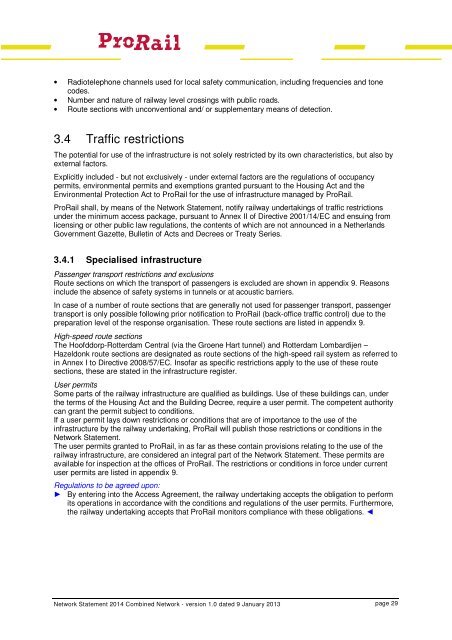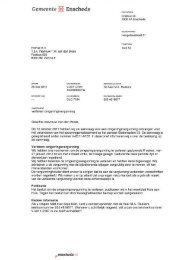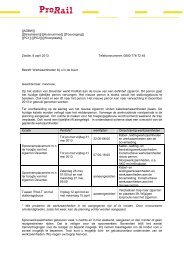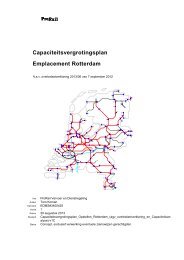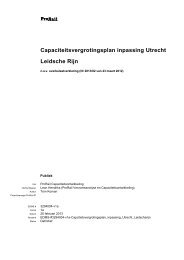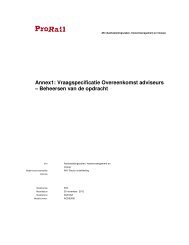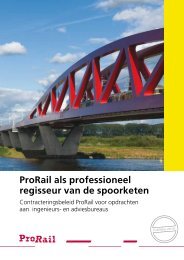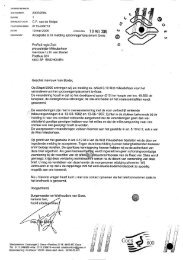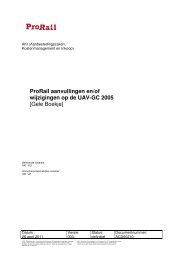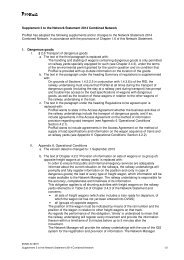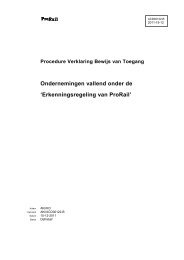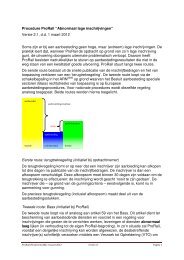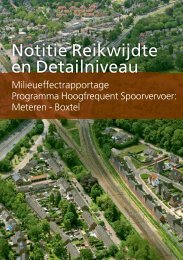Network Statement 2014 - ProRail
Network Statement 2014 - ProRail
Network Statement 2014 - ProRail
- No tags were found...
You also want an ePaper? Increase the reach of your titles
YUMPU automatically turns print PDFs into web optimized ePapers that Google loves.
• Radiotelephone channels used for local safety communication, including frequencies and tonecodes.• Number and nature of railway level crossings with public roads.• Route sections with unconventional and/ or supplementary means of detection.3.4 Traffic restrictionsThe potential for use of the infrastructure is not solely restricted by its own characteristics, but also byexternal factors.Explicitly included - but not exclusively - under external factors are the regulations of occupancypermits, environmental permits and exemptions granted pursuant to the Housing Act and theEnvironmental Protection Act to <strong>ProRail</strong> for the use of infrastructure managed by <strong>ProRail</strong>.<strong>ProRail</strong> shall, by means of the <strong>Network</strong> <strong>Statement</strong>, notify railway undertakings of traffic restrictionsunder the minimum access package, pursuant to Annex II of Directive 2001/14/EC and ensuing fromlicensing or other public law regulations, the contents of which are not announced in a NetherlandsGovernment Gazette, Bulletin of Acts and Decrees or Treaty Series.3.4.1 Specialised infrastructurePassenger transport restrictions and exclusionsRoute sections on which the transport of passengers is excluded are shown in appendix 9. Reasonsinclude the absence of safety systems in tunnels or at acoustic barriers.In case of a number of route sections that are generally not used for passenger transport, passengertransport is only possible following prior notification to <strong>ProRail</strong> (back-office traffic control) due to thepreparation level of the response organisation. These route sections are listed in appendix 9.High-speed route sectionsThe Hoofddorp-Rotterdam Central (via the Groene Hart tunnel) and Rotterdam Lombardijen –Hazeldonk route sections are designated as route sections of the high-speed rail system as referred toin Annex I to Directive 2008/57/EC. Insofar as specific restrictions apply to the use of these routesections, these are stated in the infrastructure register.User permitsSome parts of the railway infrastructure are qualified as buildings. Use of these buildings can, underthe terms of the Housing Act and the Building Decree, require a user permit. The competent authoritycan grant the permit subject to conditions.If a user permit lays down restrictions or conditions that are of importance to the use of theinfrastructure by the railway undertaking, <strong>ProRail</strong> will publish those restrictions or conditions in the<strong>Network</strong> <strong>Statement</strong>.The user permits granted to <strong>ProRail</strong>, in as far as these contain provisions relating to the use of therailway infrastructure, are considered an integral part of the <strong>Network</strong> <strong>Statement</strong>. These permits areavailable for inspection at the offices of <strong>ProRail</strong>. The restrictions or conditions in force under currentuser permits are listed in appendix 9.Regulations to be agreed upon:► By entering into the Access Agreement, the railway undertaking accepts the obligation to performits operations in accordance with the conditions and regulations of the user permits. Furthermore,the railway undertaking accepts that <strong>ProRail</strong> monitors compliance with these obligations. ◄<strong>Network</strong> <strong>Statement</strong> <strong>2014</strong> Combined <strong>Network</strong> - version 1.0 dated 9 January 2013 page 29


